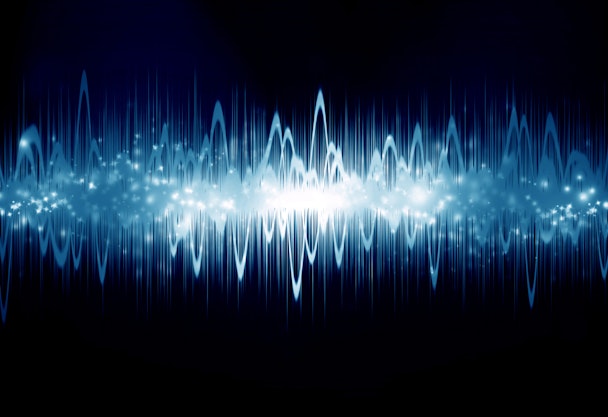Let's get loud: Why digital audio is turning up the volume in 2017
Over the past few years, the surging popularity of Digital Audio has grown to become a mainstay of the media landscape. Spotify has over 100 million users, Chance The Rapper dedicated his Grammy to SoundCloud, and even Neil Young is getting in on the action.

Let's get loud: Why digital audio is turning up the volume in 2017
The influence of Digital Audio in people’s lives is growing, and marketers are tapping into the opportunity that this presents - a medium that combines the effectiveness of radio with the added dimension of proprietary data.
The automation of other sectors of the media world outside of 'standard' digital, such as OOH, Print, TV, is well documented, as those markets continue to innovate to meet changing needs and expectations. And Audio today is an especially interesting part of that trend, driven by a few key factors – automation, consumer behaviour, brand safety, and future potential.
Automating Audio
Through the latter part of last year and moving into 2017, we’ve seen some significant developments in Digital Audio going programmatic. Spotify launched their Programmatic Audio product globally in July 2016, partnering with Rubicon Project to make their inventory available at scale to marketers who want to reach connected consumers in this special sensory-specific environment. We’ve already had tremendous uptake from advertisers with Spotify across the US, Europe and APAC, and this initial Audio venture is beginning to snowball into 2017, with recent global partnerships with renowned music and audio platform SoundCloud, and Digital Audio advertising platform TargetSpot. And it’s not just Rubicon Project getting excited about this. eMarketer states that marketers will on average be allocating an 11.6% slice of their budgets to Audio this year – more than double that of 18 months ago.
Control & Access – The Game-Changers
The way that people consume Audio today is down to two crucial factors – access and control. The proliferation of streaming services, smart devices, IoT, WiFi, and 4G has given consumers unprecedented access to music. It’s their companion when they work, travel, exercise, eat – even as they shower and sleep. And when it comes to control, consumers are now taking a much more proactive approach to what they’re listening to. It’s no longer governed by an office speaker or broadcast radio; individuals are choosing artists, creating playlists, and curating their own unique experience. According to the IAB’s Big Audio Handbook, 50% of adults and over 75% of 15-24 year olds listen to Audio via the Internet in the UK. The UK saw 45 billion streams last year, versus just 15 billion the year before.
This has presented brands with a very different advertising opportunity. As Alison Moore, CRO of SoundCloud said at this year’s Advertising Week Europe, “You’re really zeroing it down to one sense – hearing. There’s something really simplistic about the Audio experience.” The fact that we can combine instinctive human moods and emotions with the targeting and data-rich benefits of digital makes Digital Audio much more than simply the traditional Radio format put online. Add the automation, scale, and efficiency of programmatic and it’s no secret as to why Digital Audio is taking off in a big way.
Safe & Sound
Ensuring brand safety has always been a crucial component of digital marketing, and it has never been higher on the agenda than today. More than ever, brands want to capitalise on the unique benefits of digital without compromising on environment, and Digital Audio platforms like Spotify and SoundCloud have this to their advantage, offering marketers a clean, premium and intimate environment in which to advertise. Not only do they offer this brand safety with logged-in userbases, 100% share of voice and unskippability, but Digital Audio by its nature will have the kind of viewability (or ‘hearability’) metrics that brands desire. Combine this with the familiarity and acceptance of audio ads from a lifetime of radio, and it only adds to the Audio appeal.
The Future of Audio
Digital Audio still has room to develop before it truly competes alongside other more established digital formats, but it has all the foundations in place to gather pace in 2017. To offer advertisers the attribution modelling, cross-device tracking and listener data from which they can gain insights to inform future campaigns will all be a big step towards Audio carving out a healthy slice of brand budgets.
When it comes to unlocking the real future market opportunity for Audio it again comes back to those two key factors: access and control. When in-car Audio capabilities maturate and are rolled out as standard, this will greatly drive the scale of Audio as a business both for publishers and for advertisers. Voice command is also another future opportunity as Siri, Google Home, Alexa and more start to penetrate homes and become more commonplace.
Audio may well be the digital advertising format marketers have been looking for. With the engagement and uniqueness of video and the targeting qualities of display, it’s a format that strikes the balance between being beneficial for marketers and benevolent to consumers.
As it currently stands, helping mature the audio market with existing programmatic platforms and systems will play a massive part in the sector’s success, and will be a collaborative partnership between technology providers, publishers and advertisers to disrupt and develop the market, while ensuring the premium nature of the format remains. I think we will see Audio take some big strides in 2017, and it’s definitely an area we’ll be making a lot of noise in.
By Steve Wing, MD Rubicon Project, UK & Nordics
Content by The Drum Network member:

Rubicon Project
Rubicon Project is an online advertising technology firm based in Los Angeles, California.
Find out more
